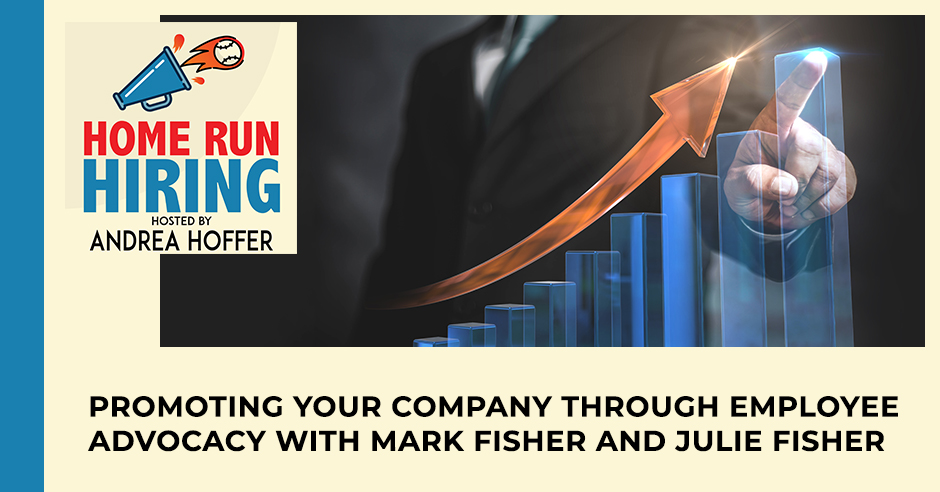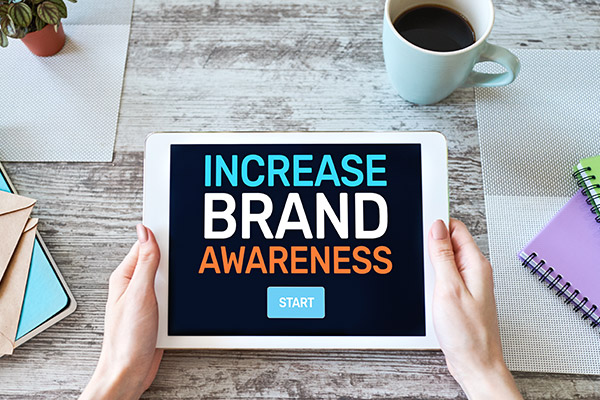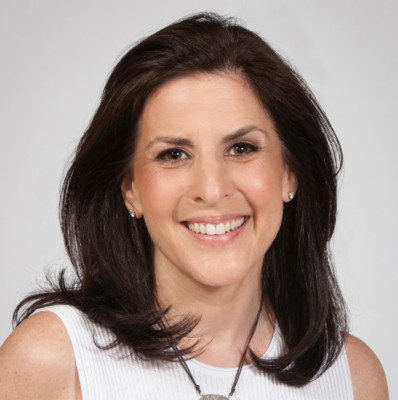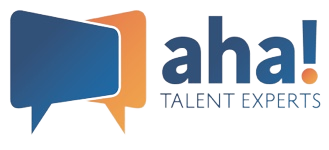Your resource for people wisdom and trends
Promoting Your Company Through Employee Advocacy With Mark Fisher and Julie Fisher

Many people may not have heard the term “employee advocacy” before. In simple terms, it means when your current team members promote your company to others. This is typically done nowadays through social media. While employee advocacy may sound a simple concept, it is not always so simple to encourage your employees to promote you or to administer an employee advocacy program. On today’s show, Andrea Hoffer invites Mark Fisher and Julie Fisher to talk about how to build your credibility as an employer and improve the quality of candidates that you attract through employee advocacy. Both Mark and Julie are experts in establishing and administering employee advocacy programs.
—
Listen to the podcast here:
[smart_track_player url=”https://feeds.podetize.com/ep/9RJLLcz0V/media” title=”Promoting Your Company Through Employee Advocacy With Mark Fisher and Julie Fisher” ]
Promoting Your Company Through Employee Advocacy With Mark Fisher and Julie Fisher
We’re going to talk about how to build your credibility as an employer and improve the quality of candidates that you attract through employee advocacy. Some of you may not have heard the term employee advocacy before. In simple terms, it’s when your current team members promote your company to others. This is typically done nowadays through social media. While employee advocacy may sound a simple concept, it is not always so simple to encourage your employees to promote you or to administer an employee advocacy program. My guests are experts in establishing and administering employee advocacy programs.
Before I introduce them and welcome them on, I’d like to tell you a little bit about these incredible people. Mark Fisher is CEO of Echo70, an employee advocacy consulting firm, which allows him to combine his experience as a Business Owner, Lawyer, Salesman and Risk Management Consultant with his partner‘s experience who’s also on with us as a Social Media Expert, Author, Trainer and Keynote Speaker. After six years as a litigator defending the car companies countrywide, he spent twenty years running and co–owning a major risk management firm with more than 100 employees across the country, leading sales, HR, compliance, vendor relations, and marketing.
In addition to growing his EBITDA by 700%, he knows firsthand the challenges of recruiting, filling the sales funnel and customer service. He’s a strategic problem-solver who sees that social media is both an amazing opportunity as well as a potential legal minefield for business large and small. His goal at Echo70 is to share his knowledge with businesses that want more and better sales, employees and brand awareness without running afoul of the FTC or the NLRB or alienating their current employees.
[bctt tweet=”People are 16X more likely to engage with an identical post if it comes from a friend rather than from the brand that sent it to them. ” username=”AHA_Recruiting”]
Julie Fisher is a Social Media and Technology Coach and Consultant, Founder of Echo70, an employee advocacy consultant consultancy firm, creator of The Resiliency Puzzle, a book and curriculum for parents and educators, and Founder of Your Digital Guardian. She’s a sought-after Keynote Speaker, having spoken to tens of thousands of employees, business leaders, parents, educators, and students on topics related to all things social media and technology, and how they relate to mental wellbeing. She served as the Executive Director of Building Better Families Through Action, a nonprofit focusing on preventing risky behavior in kids and teens, as well as teaching high school for many years.
—
Thank you, Mark and Julie for being here with us.
Thank you for having us.
Could you start off by sharing with us a little bit about Echo70, and what led the two of you to co–finding this company, especially in the area of employee advocacy?
I have been working as a trainer and consultant in social media since 2008, since we all started getting into social media. In 2018, 2019, I was approached by multiple business owners who knew about my experience, all the speaking and training that I had done, and they asked me to help them with some social media issues at their workplaces. After hearing their concerns, I went to my partner, Mark, because I realized that our combined experience in what I do social media and training and his experience in sales, risk management and the law provided us with a unique set of skills to help those businesses. Some of them were concerned with curtailing their employees use of social media. The visionaries saw the potential of harnessing the power that their employees to bring to the table as actual advocates for their businesses online using their personal social media networks. That’s how we combined our talents to form Echo70.
I mentioned a simple definition of employee advocacy. Could you expand on that definition of what employee advocacy is, and share with us why a company may want to consider establishing an employee advocacy program?

Employee Advocacy: An employee advocacy program can increase your brand awareness more than the same message broadcasted on your brand or company’s channel.
Employee advocacy is promoting your company’s messages online through your employee’s personal social networks, beyond LinkedIn. Think Facebook, Instagram, YouTube, and getting to their personal social networks. Whatever your messages are, whether it’s brand awareness, if you want to increase your brand awareness, an employee advocacy program can increase your brand awareness 561% more than the same message broadcast on your brand channel, your company’s channel, by getting into your employee’s social networks. You can improve your brand authenticity and trust, people are 16X more likely to engage with and interact with an identical post if it comes from a friend of theirs, rather than from the brand that sent it to them. We’re talking identical posts. That’s human nature. We trust our friends.
When my friends send me something, I’m much more likely to open it than the same thing that came from their business. You can improve results in recruiting by gaining access to new talent pools and increasing diversity and reducing costs. Candidates referred by an existing employee, as I’m sure you know, are 5X more likely to be hired than employees who find you through a stranger or other method. We take advantage of that. You can increase your sales. Leads are 7X more likely to close if they come through a source of one of your employees because they trust them and they know them. You can increase your employee engagement and reinforce your culture.
Social sharing is a great way to build your company’s family. I talk about in my social media how great it is to work for your company that goes farther and wider than the identical posts that our companies post. Finally, there is protecting your brand reputation, because there are a number of rules out there that affect what can be done and how it must be done when it relates to social media. If you don’t have an employee advocacy plan, you may inadvertently step on your own toes or expose your brand to possible risks that training, and an employee advocacy program can avert.
Sounds like a lot of benefits to establish a program like this. Where would you suggest a company start if they want to start building an employee advocacy program?
[bctt tweet=”Whatever you put out there is going to follow you, and people are going to judge you based on what you put out there. ” username=”AHA_Recruiting”]
You got to start at the top, you got to start with company leadership. There’s more planning required to a successful employee advocacy program and saying to your employees, “We’re going to have you all share our content online or send it in an email. The tweet for this week, but it’s in an email.” In order for any program to be successful, your leadership has to be invested from the beginning and participate themselves. If employees don’t see that the leaders are sharing information on their own personal accounts or giving shout-outs, the employee is going to say, “Why would I do that?” Leaders must be invested, and they must participate. That’s the top.
It sounds like a program like this takes a lot of effort and some time and resources and can be a little difficult to manage and administrate, how would you suggest a company set up the program so that they have ongoing success?
It may sound daunting, but it doesn’t have to be. A successful program can be put together in 30 to 60 days if leadership is committed. There are four steps to launch. There’s a strategy development and goal setting where you identify what you mean to accomplish if new sales are not your issue. If you don’t have enough employees to handle the sales that you have, then you need to set up a program that’s more focused on recruiting and less focused on sales that needs to happen at the beginning, then you need to identify your corporate policies and select your technology. There’s a technology background to this that helps make it easy for employees to use it, then focus on the creation of content. We’d like to refer to it as employee first content, which we’ll talk about in a minute, but there’s a content pipeline that needs to be planned for and set up. There needs to be training, not just on the software, but on what can be done, what should be done, how frequently someone should post.
We’re big believers in not over-sharing on behalf of your company. Nobody wants to have their friend’s feed filled with self-promoting or promoting on behalf of their business. We talk about how your frequency of posting for the employees should be based on how often they are already posting. If they’re posting only once or twice a week, then there shouldn’t be once or twice a week on behalf of their company. After training comes deployment, and you can then launch. It takes 30 to 60 days, and it is not as difficult as long as you have an organized roadmap, which is what we do at Echo70 to help people out.
I could see where, especially in the beginning, it might be difficult to get the employees to participate in the program. Do you have a couple of tips you can share with us to help encourage that participation?
One of the things that employers don’t necessarily realize is 50% of their employees are already posting about work deadline. Think about your typical employee. Something happens at work and either they’re saying yay, or they’re complaining about it, maybe there was ice cream in the freezer, so they’re posting about the ice cream break, or maybe their boss said something they didn’t want. That’s all going out there online. They’re posting without any social media training or guidance. In many cases, companies haven’t set up guard rails and train their employees to those guard rails, both to help protect the brand and to protect the employee. We all have to remember that everything we do online adds to our digital footprint, which is going to follow us the rest of our lives.

Employee Advocacy: On average, an American spends two and a half hours a day on social media, but only two and a half minutes a month on LinkedIn.
Employees need guidance and training, and they need to understand why maybe you wouldn’t want to negatively call out your lawyer online because this may not be your last job. Through training, we make them understand that whatever they put out there is going to follow them and other people they’re going to judge them based on what they put out there. That said, employee participation in employee advocacy programs will grow when companies explain the what’s in it for me factor. Why should I want to share, improving your personal brand, getting some thought leadership out there for you making you seem you’re an expert in a certain area within the industry. Employees are most likely to share when you give them employee–first content. An easy way to get that content out there, as I said before, if you send them an email with some information to post, most employees are not going to cut and paste it into their own Facebook or Instagram, and usually it’s not the format designed. They have to go in and start formatting and figuring out the captions and all that stuff. The technology tools that we use make it one–click easy.
You both mentioned employee–first content a couple of times. I’m assuming this is the type of content that you want to encourage or share with the employees to post, but what does it typically look like?
It’s often similar to your existing company content, but instead of thinking about your clients or potential customers as your audience in terms of marketing, we train businesses to tweak that content with their employees in mind. I’ll give you an example. Instead of trying to sell more property insurance, you might want to give your employees content to share with their personal networks that’s less salesy and more helpful like, “Here are five ways to prepare for hurricane season.“ There’s an image, it’s sized correctly, it has your branding in the corner, your website in the corner, and it allows them also the opportunity to personalize that content. It’s something they might want to share to say, “I know that my friends, my personal networks will see this is helpful. I’m going to put it out there as a great resource to my community of friends.” When you provide them with that content and it’s one–click shareable, they are much more likely to share it.
We are all about recruiting and keeping your employees engaged on this show. Could you share with us some companies you’ve worked with, some examples of where you’ve seen an impact from an employee advocacy program on the results that they got from their recruitment efforts?
All of our clients are subject to NDA, so I can’t talk about them specifically, but we’ve seen a positive recruiting impact across the board. If you think about it, if you’re recruiting legal assistants or medical professionals or anyone, they went to school with people to train for the job that they have now. All of those people are a whole new pool of potential recruits that your company’s messages could reach because they’re all friends on Instagram and Facebook. It is getting that message out through those channels that has led to hire recruiting. It’s similar to most companies have an existing employee referral hiring program where if you refer us somebody and we hire them and they’re still here after 90 days, we will pay you existing employee X dollars for referring us to that person.
That works well, which is why almost every company has it, but we’re now taking that power and leveraging it and expanding it through the power of personal social networks because most employees have hundreds, if not thousands of followers. Those followers and friends exist in a much broader sense than they will in their private life. I would not necessarily think to call everybody I went to school with and say, “I was a lawyer. I love working here and we’re hiring. Are any of you satisfied and want to do to come work here?” That’s awkward and I’m not likely to do that, but I’m likely to to hit a one–click and put a post about a resolution that we had that was favorable. How much I like working here, how smart the people I work with are, how much we’re growing, any way you want to characterize that message, and now it goes to hundreds of people.
It’s important to remember that while we don’t discourage the use of LinkedIn, we are talking about getting to the other social media networks in large part because, on average, an American spends two and a half hours a day on social media, but only two and a half minutes a month on LinkedIn. That’s not negating the value of LinkedIn, it has a wonderful use, but most of the time we spend is in other arenas, and that’s where we try to help businesses get their messages out and that’s where the leverage comes from, that’s where the new employees come from. You can get to all sorts of different populations in a new way.
I’ve never heard that statistic before. We do focus a lot on LinkedIn when we’re recruiting.
For job seekers, they’re going to be on LinkedIn more often than people who are not looking for a job. Oftentimes when it comes to recruiting, it could be a friend from school that maybe you’re not connected with on LinkedIn gets in the same field that if you only posted on LinkedIn and you’re only focused on LinkedIn and they’re not looking for a job, but now they see this opportunity and you say, “I work here, I love it here.” You’re going to get that call a whole lot easier and perhaps get a better candidate.
It’s far more effective for those people who don’t necessarily know that they’re looking for a job. They’re not looking for a job. They know that their current job is only okay. It looks like Andrea loves her job, and that is a wonderful place to work. They’re doing interesting things. They have interesting clients. It is a way to conduct top-of-mind recruiting or drip recruiting through your passive brand ambassadors, which are your existing employees. They’re the ones who are, most of the time, delivering on the promises that the CEO and the salespeople make. They’re the ones who said, “Yes, I solved this problem for our company. Yes, we did this. Yes, we exceeded our delivery schedule last quarter.” Whatever those messages are, they are more authentic and more trusted when they come from the people that are doing it. That is proven effective.
Keep that in mind. We expand on our recruitment efforts. I’ve learned a lot speaking with the two of you. I appreciate you being on here. Is there anything else you would like to add that maybe we haven’t touched on yet?
We touched on it a little bit, but one of the things that get lost is the employment compliance aspects of employee advocacy. It is improper. I dare say illegal to go in and tell all of your employees they must post online on social media or that their review in any way will be impacted by whether they do or do not participate in one of these programs. That’s an issue. It’s also an issue if they fail to properly identify that they have a material connection to your business. They may say, “XYZ Industries is a great company.” If that post doesn’t identify that they work for XYZ Industries, that is a violation of the laws and regulations of the Federal Trade Commission. Before everybody who’s watching these things, they are only going to go after Boeing or Exxon or some large company, the FTC has been chasing much smaller companies.
A du branch in Nevada with 75 employees was fined by the FTC for essentially a similar violation. It gets smaller, copyright, confidentiality and privacy, these are all areas where law and compliance can be critical. They’re not hard to set up. Once you explain it, they’re easy to follow, but if you don’t do it right, you could harm yourself. Furthermore, if you want to be able to take employment action for employees, for posting negative things about your brand or in this environment, political items. If you want to reserve your right as an employer to respond, we’re all familiar with some of the more outrageous posts to people have had.
You need a corporate policy that says, “By the way, if you say discriminatory or harassing things online, or are caught bullying or infringing on copyright, that may affect your employment with our company.” If you don’t tell them that, you have denied yourself an easy opportunity to protect yourself. You also can’t tell them not to disparate your company. You can tell them not to disparage their co–employers, your customers and your vendors, but to have to stop short there. It’s not hard to stop short and act easy if you’re providing them good employee–first content. They’d rather post that than posting something negative about you.
[bctt tweet=”Whatever the messages are, they are more authentic and trusted when they come from the people doing it. ” username=”AHA_Recruiting”]
When you train them, you have to make sure that you phrase that in a way where you didn’t say, “You can’t say bad things about the company, because that is a violation of the National Labor Relations Act. They are increasing enforcement in that area.” I wasn’t sure we had touched on that, but those are important areas. Employee advocacy can both be a way to promote your messages, but it’s also a way to protect yourself from potential violations that you don’t want to run into. As Julie said, if 50% of the people are already talking about you and you haven’t trained them on this, how many of them are doing things that could get you or them into trouble?
Is it where the legal background comes into play here?
It is helpful, but then again, the policies are not super complicated or difficult, but they’re important to get right and get right at the beginning and then have training on them.
Thank you both for joining us. If somebody wants to reach out to you to ask you a question, or to use your services, what is the best way for them to contact you?
Email is usually the easiest depending on where they are. I’m Mark@Echo70.com.
I’m Julie@Echo70.com. I try to make it easy.
Thank you all for joining us for this episode. Please stay safe and happy.
Thank you.
Important Links:
- Echo70
- The Resiliency Puzzle
- Your Digital Guardian
- Building Better Families Through Action
- Mark@Echo70.com
- Julie@Echo70.com
About Mark Fisher
 Mark Fisher is the CEO of Echo70, an Employee Advocacy Consulting firm, which allows him to combine his experience as a business owner, lawyer, salesman and risk management consultant with his partner’s experience as a Social Media expert, author, trainer and keynote speaker.
Mark Fisher is the CEO of Echo70, an Employee Advocacy Consulting firm, which allows him to combine his experience as a business owner, lawyer, salesman and risk management consultant with his partner’s experience as a Social Media expert, author, trainer and keynote speaker.
After 6 years as a litigator defending the car companies country-wide, he spent 20 years running and co-owning a major Risk Management firm with more than 100 employees across the country, leading Sales, HR, Compliance, Vendor-relations, and Marketing, in addition to growing EBITDA by 700%.
He knows first-hand the challenges of recruiting, filling the sales funnel, and customer service. He is a strategic problem-solver who sees that Social Media is both an amazing opportunity and a potential legal minefield for businesses large and small.
His goal at Echo70 is to share his knowledge with businesses that want more and better Sales, Employees, and Brand Awareness, without running afoul of the FTC or the NLRB, or alienating their current employees.
About Julie Fisher
 Julie Fisher is a social media and technology coach and consultant; founder of Echo70, an employee advocacy consultancy firm; creator of The Resiliency Puzzle, a book and curriculum for parents and educators; and founder of Your Digital Guardian.
Julie Fisher is a social media and technology coach and consultant; founder of Echo70, an employee advocacy consultancy firm; creator of The Resiliency Puzzle, a book and curriculum for parents and educators; and founder of Your Digital Guardian.
She is a sought-after keynote speaker having spoken to tens of thousands of employees, business leaders, parents, educators, and students on topics related to all things social media and technology and how they relate to mental well-being.
She served as the executive director of Building Better Families through Action, a non-profit focusing on preventing risky behavior in kids and teens as well as teaching high school for many years.




